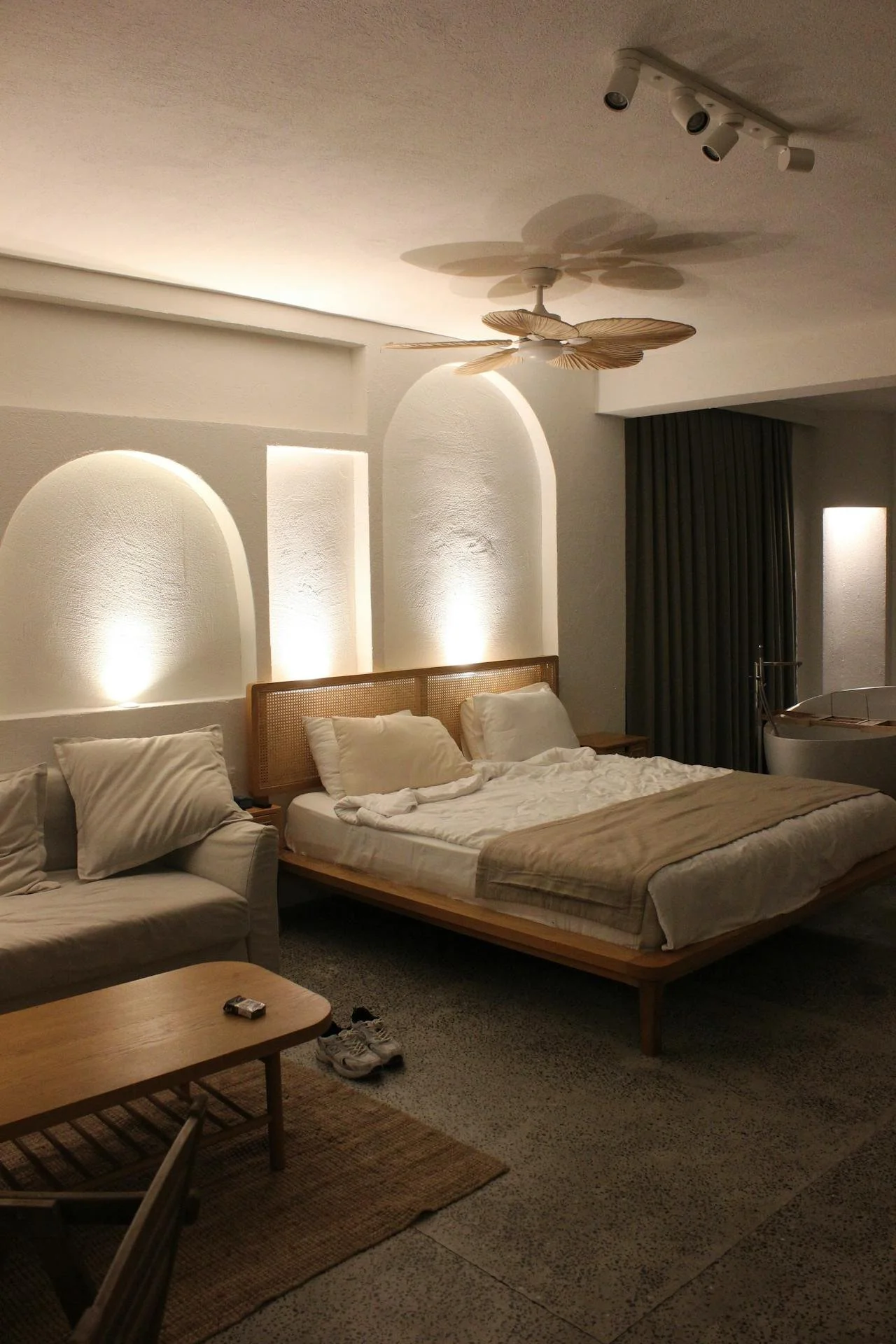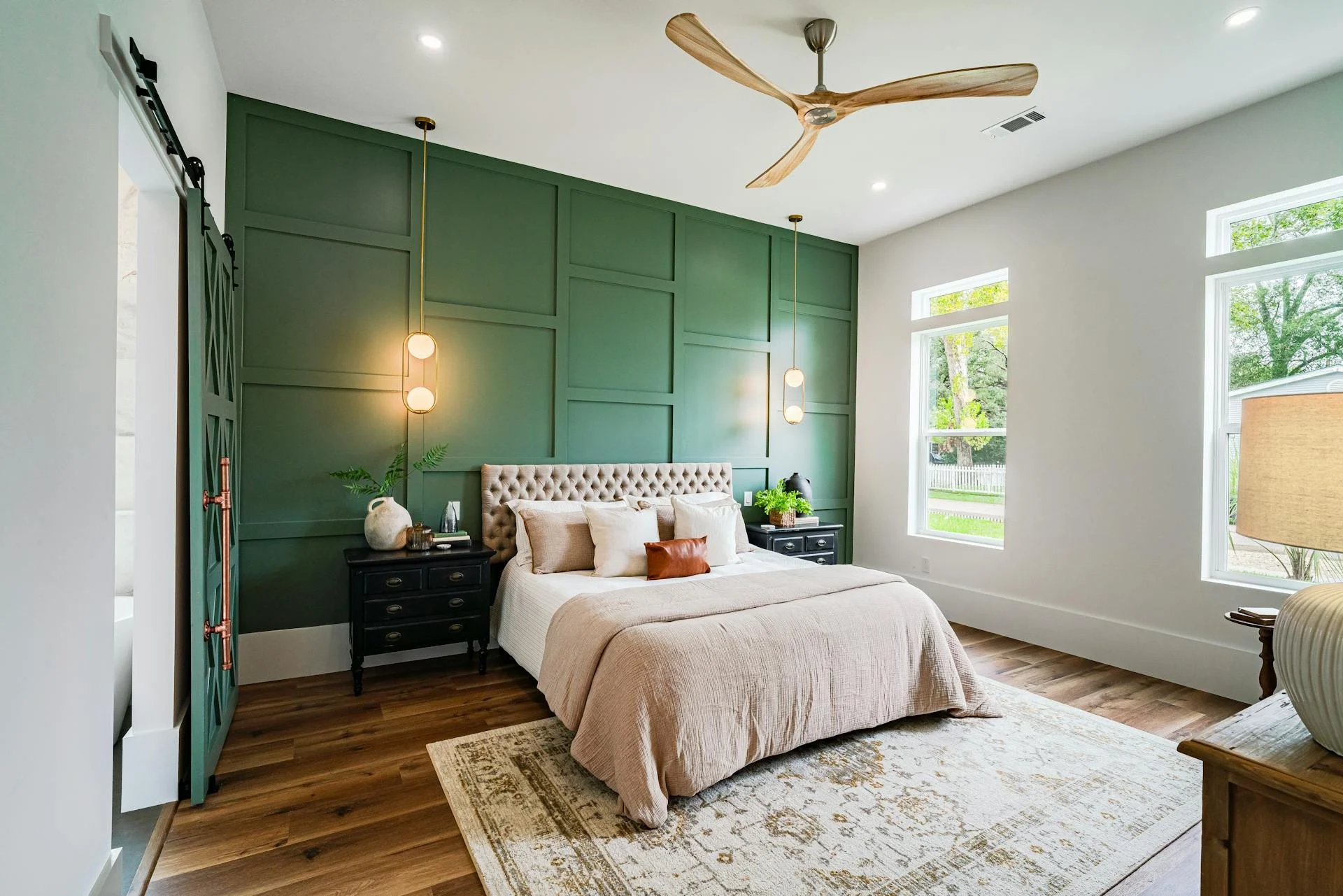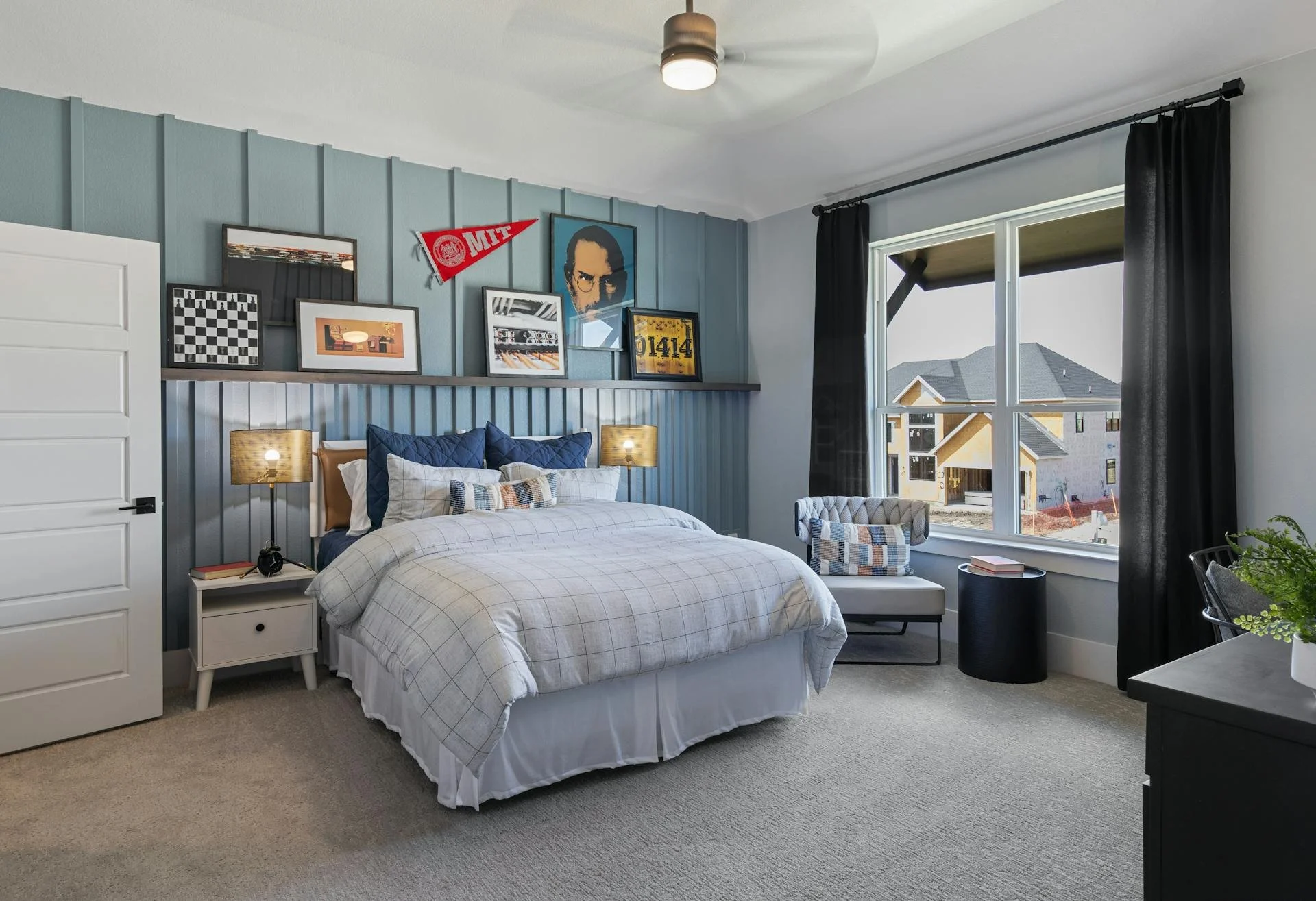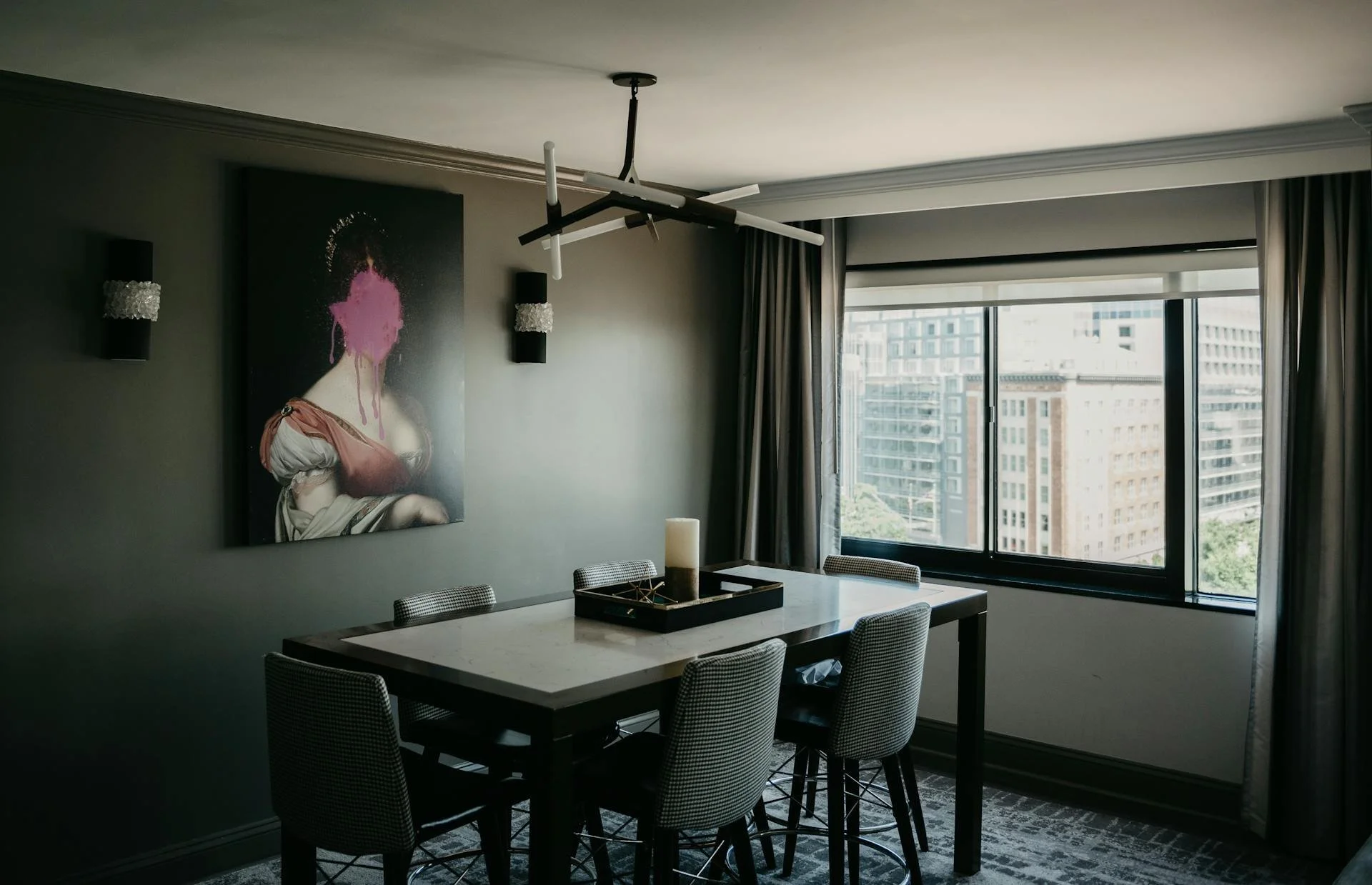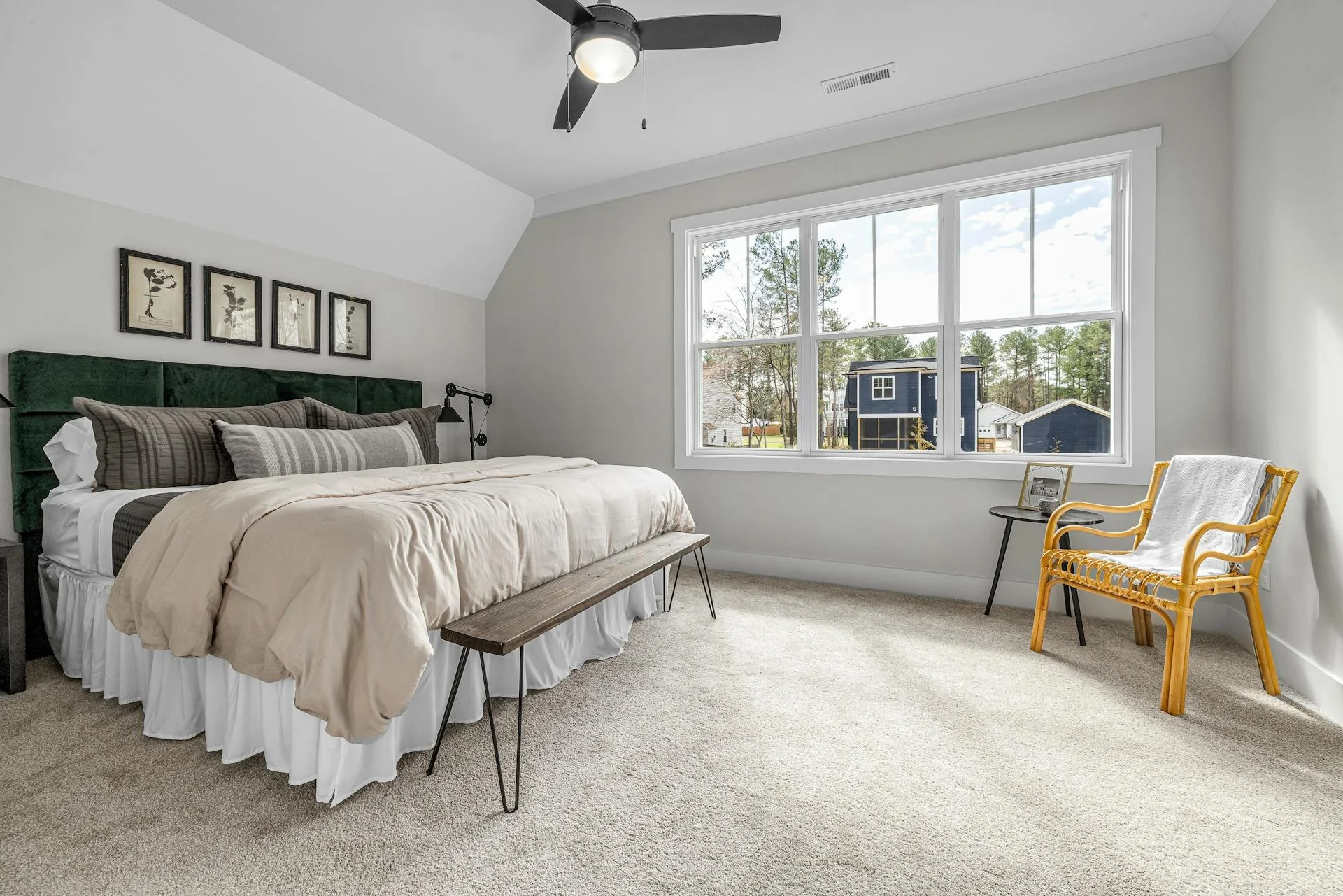ceiling fans with lights: Options for Every Budget
A modern ceiling fans with lights adds both illumination and air circulation to a living space.
For homeowners, interior design enthusiasts, and home renovators alike, one fixture offers both comfort and style: the ceiling fans with lights. Combining an overhead light with a ceiling fan, this dual-purpose appliance can enhance your home's ambiance while keeping you cool and comfortable. Beyond its practical benefits, today's fan-light combos come in designs ranging from subtle to stunning, making them suitable for any décor. This article will explore why these fixtures are a smart choice, what to consider when shopping, and how to find the perfect option across three budget levels. Along the way, you'll pick up important tips to ensure your ceiling fans apgrade is both stylish and sensible.
Ceiling Fans with Lights: Why Choose One?
Choosing a ceiling fan that includes a built-in light yields multiple benefits in one package. First, it’s an energy-efficient way to improve comfort. Even if you have air conditioning, a fan circulates air to create a breeze, helping a room feel cooler while using far less electricity than running the AC. This can lower cooling costs in summer. In winter, many fans have a reverse setting that, when run clockwise on low, gently pushes warm air down from the ceiling to keep the space cozy. In other words, a fan-light fixture can help regulate temperature year-round.
Another advantage is space-saving functionality. Instead of needing both a ceiling light and a separate fan, a combined unit performs both functions from a single electrical box. This keeps the ceiling uncluttered and is especially handy in smaller rooms or those with only one overhead fixture spot. The integrated lighting provides general illumination, often using efficient LED bulbs or modules that last a long time with minimal energy use.
Crucially, modern ceiling fans with lights are no longer the design "eyesores" they once were, famously called. Manufacturers now offer a vast range of aesthetically pleasing styles – from sleek contemporary designs to rustic or even chandelier-like statement pieces – so you don’t have to sacrifice looks for comfort. In fact, when chosen well, a fan can complement your interior style or even act as a focal point. In summary, these fixtures deliver comfort, lighting, and style in one, making them a smart addition to living rooms, bedrooms, and even outdoor covered patios.
What to Consider When Choosing Your Fan-Light Fixture?
Before you buy, consider a few key factors to select the ideal fan-light for your needs. Here are some important factors to evaluate:
Room Size & Fan Size: Match the fan’s diameter (blade span) to your room dimensions for effective air flow. Small rooms (e.g., under 100 sq. ft.) work well with fans around 29–36 inches, medium rooms (100–150 sq. ft.) with fans 42–50 inches, and large spaces with fans 52 inches or larger. A fan that is too small won’t cool adequately, while one that is too large can overwhelm the space or create an excessive draft directly below it.
Ceiling Height & Mounting: For optimal circulation, the fan blades should be positioned approximately 7–9 feet above the floor. If you have low ceilings (under 8 feet), choose a flush-mount (hugger) fan that sits close to the ceiling. For high or vaulted ceilings, look for fans that include a downrod extension so you can lower the fan to the right height. Many models offer optional downrod lengths to ensure the fan hangs at an ideal level.
Lighting Needs: Consider the room’s lighting requirements. If it's a space with ample natural or other light sources, a fan’s light might be supplemental or even unnecessary. But in darker rooms, opt for a ceiling fan which has an integrated light that provides sufficient brightness. Check if the fixture uses standard bulb bases, allowing you to choose LED bulbs (possibly dimmable), or if it has an integrated LED module. Dimmable lights or multiple brightness settings can add versatility, letting your fan double as mood lighting. Also note the color temperature of the light (soft warm glow vs. cool white) to match your room’s ambiance.
Style & Aesthetics: Ceiling fans are available in a range of styles, from traditional to ultra-modern. Choose one that complements your room decor. For a cohesive look, you might select a fan finish that matches other fixtures or even the ceiling. Alternatively, make a style statement: there are fans with tropical palm leaf blades for a coastal vibe, sleek minimalist designs with three blades for modern interiors, and even “fandelier” designs that combine a chandelier’s glamour with a fan’s functionality. The key is to ensure the fan’s look aligns with your design vision — either by discreetly complementing the room or by standing out as an intentional focal piece.
Controls & Convenience: Think about how you prefer to operate the fan and light. Options include pull chains, wall switches, remote controls, and even smart app or voice controls on newer models. Wall switches (or wall-mounted remotes) are reliable and hardwired – good if you don’t want to worry about misplacing a remote. Handheld remotes offer convenience from anywhere in the room (great for bedrooms to adjust the fan without getting up). Some modern fans also integrate with smart home systems, allowing you to control them via phone or Alexa/Google Assistant. Choose a control option that fits your lifestyle.
Motor and Airflow Efficiency: A quality motor means quieter operation and better air movement. Fans with DC motors are typically quieter and more energy-efficient than those with traditional AC motors, although they may cost slightly more. Check the fan’s airflow rating (often given in CFM – cubic feet per minute) to ensure it’s powerful enough for your room size. Look for an Energy Star rated fan, which certifies efficiency in both the fan and the lighting.
Reversible Direction: For maximum benefit year-round, confirm the fan has a reversible motor (most do). This allows you to run it counter-clockwise in summer for a cooling breeze, and clockwise in winter to push warm air down. Using this feature can make a room feel cooler or warmer as needed without adjusting your thermostat too drastically, thus saving energy.
By weighing all these factors – size, mounting, lighting, style, controls, and performance – you’ll be equipped to choose a fan that perfectly suits your space and needs.
Budget-Friendly Ceiling Fans with Lights (Under $150)
Not everyone has a huge budget for upgrades, but the good news is you can find plenty of affordable fan-light combinations that get the job done without breaking the bank. Budget-friendly ceiling fan with lights (roughly in the under-$150 price range) offer basic functionality and simple styles at a wallet-friendly price. At this level, you can expect durable but no-frills materials and standard features.
What features come with a budget fan? Typically, these fans have three to five blades made of medium-density fiberboard or basic wood veneer, along with a standard AC motor. They usually include a light kit with one or two bulbs (often standard E26 base) covered by a simple dome or bowl-shaped glass. The lighting will be adequate for general use, although it may not be as bright or adjustable as that of higher-end models. Many budget models now ship with LED bulbs for efficiency, or have an integrated LED with a single color temperature. Controls are often via pull chains for both fan speed and light on/off. However, some affordable units do include a remote or at least compatibility with add-on remote kits, providing convenience at a little extra cost.
In terms of aesthetics, budget fans tend toward classic and understated designs. Common finishes are white, brushed nickel, or bronze. While they may not be conversation pieces, they can still look stylish if integrated thoughtfully. One tip from designers is to choose a simple, neutral-colored fan that blends into the ceiling or overall color scheme, which helps a cheaper fan feel less obtrusive. For example, a white flush-mount fan with light can almost disappear on a white ceiling, quietly doing its job. You can also find inexpensive fans in contemporary styles, such as a sleek three-blade matte black model, that provide a modern look without a high price tag.
Despite the lower cost, even a budget ceiling fan with lights can offer solid performance for a small to mid-size room. Many models in the $150 range have reversible motors and multiple speed settings. Installation is usually straightforward, making these a popular DIY upgrade for beginner home renovators. Keep an eye on trusted budget-friendly brands or store brands from major retailers. In fact, it’s possible to get a well-rated 42–52 inch fan with an integrated light for under $100 if you shop sales or clearance. Remember, basic doesn’t mean ineffective – even the simplest fan will improve air circulation and provide overhead lighting. And down the line, bulbs can be upgraded to LEDs or remotes added, if needed.
Important Budget Tip for ceiling fan with lights: Don’t skimp on size suitability. Even if you’re on a budget, choose the correct fan size for your room (it’s better to buy a slightly smaller, quality fan than a large, cheap one that wobbles or strains). Also, ensure the fan comes with all necessary parts (some very low-cost models might not include things like a downrod or bulbs, which could add to the cost later). With smart shopping, you’ll find an affordable ceiling fanswith lights that brings comfort to your room without sacrificing style.
Mid-Range Ceiling Fans with Lights ($150 – $400)
Stepping up into the mid-range category opens up a world of greater choice and quality. Fans in this price range (approximately $150 to $400) tend to feature improved materials, more refined designs, and advanced functionality. For many homeowners, this mid-tier segment is the sweet spot, offering an excellent balance of style, performance, and value.
So what distinguishes a mid-range fan-light combo? For starters, many utilize higher-efficiency motors, including DC motors on the upper end of this bracket, which run whisper-quiet and consume less energy. The fan blades might be made of real wood or high-quality composite, balanced for smoother operation (less wobble). You’ll often find integrated LED lighting with better brightness and sometimes dimmable capability or even adjustable color temperature. At this budget, remote controls are commonly included in the box, and some models might be compatible with smart home apps or voice assistants. The build quality is generally sturdier and more durable, which is especially important for fans that will be used daily.
Design options also broaden in the mid-range. You aren’t limited to just the basic styles – manufacturers offer fans in a variety of aesthetics to match different interior design themes. For example, you can find sleek modern ceiling fans with light designs featuring slim profiles and minimalist LED rings, perfect for a contemporary living room. If you prefer an industrial or farmhouse look, there are fans with aged bronze finishes, lantern-style light enclosures, or Edison bulb accents. For those with transitional taste, you might choose a fan in matte nickel or wood tones that harmonize with both classic and modern elements in a room. The mid-range often includes fans from well-known brands (such as Hunter, Casablanca, and Westinghouse) that have a reliable performance record.
With mid-range fans, you can also expect larger sizes to be available for bigger rooms – many offer blade spans of 52 inches to 60 inches with strong airflow. Some models boast extra features like multiple mounting options (angle adapters for vaulted ceilings, for instance) or all-weather ratings for damp locations (useful if you want a fan on a covered porch). The lighting in mid-tier fans is usually more integrated into the design – for instance, an LED light ring that’s almost flush with the fan body for a seamless look, or a distinctive bowl that complements the fan’s style rather than looking like an afterthought.
One great aspect of this price level is the value for money. Often, spending a bit more (say $200 instead of $100) can get you a fan that not only looks high-end but will operate more quietly and efficiently. The fan will move air more effectively, making larger rooms comfortable. Many mid-range models are also energy-efficient enough to run frequently without guilt – a useful feature for those trying to reduce AC usage by relying on fan cooling. According to industry insights, investing in a quality fan within this range can pay off in terms of longevity and satisfaction, as these fans tend to last for many years of service with minimal issues.
When shopping in the mid-range, read reviews and look for features that matter most to you – whether it's a stylish light fixture design or a handy remote with numerous settings. The selection can be quite wide, so you’re likely to find a ceiling fan that matches both your decor and your performance expectations in this category. It’s the perfect range for those who want something a notch above basic, without venturing into luxury pricing.
High-End Ceiling Fans with Lights ($400 & Up)
At the top tier of the market, high-end ceiling fan with lights offer the ultimate in design, materials, and technology – albeit at a premium cost. If you have a generous budget (around $400 and up, stretching well into the thousands for designer models), you can expect truly standout fixtures that double as functional art pieces in your home. These luxury fans are ideal for those who prioritize top-notch performance, unique style, and advanced features.
What sets high-end fans apart? In terms of build, they often utilize premium materials, including real solid wood blades with rich finishes, high-grade metals such as polished brass or brushed steel, and bespoke glass or crystal elements in the light kits. The craftsmanship is usually evident, with details such as carved blade holders or innovative blade designs (some high-end fans feature hidden or retractable blades, or very sculptural shapes). These fans are as much about aesthetics as utility – for instance, a glamorous crystal-adorned chandelier that serves as a chandelier centerpiece while also cooling the room. You’ll find options from renowned designers and brands, offering styles from modern art-inspired looks to opulent vintage reproductions.
On the performance side, high-end models incorporate the latest technology. Nearly all will feature ultra-efficient DC motors for exceptionally quiet operation and minimal energy consumption. They often come with full-featured remote or wall controls that let you adjust multiple parameters: fan speed (sometimes 6 or more speeds), light intensity and color temperature, and reverse mode at the push of a button. Many are smart fans that integrate with smartphone apps and smart home systems, enabling scheduling, voice control, or automation (for example, some can automatically adjust speed based on room temperature). The integrated lights in this class are frequently top-of-the-line LEDs with high lumens output, smooth dimming down to a warm glow, and even color-changing capabilities in certain models.
In terms of comfort, a high-end ceiling fan with a light will usually move a significant amount of air quietly, thanks to its optimized blade design and high-quality motor. Some large-diameter luxury fans can effectively circulate air in open-concept living areas or great rooms where standard fans would struggle. Additionally, these fans often include features like adaptive learning (remembering your preferred settings) or occupancy sensors. Durability is also a hallmark – these are fixtures built to last, often backed by longer warranties.
From a design perspective, choosing a high-end fan allows you to make a bold statement or perfectly complement a high-style space. For example, in a mid-century modern home, you might opt for a pricey designer fan with sleek teak blades and an understated LED disk light. In a lavish traditional interior, you might choose a carved wood fan with a bronze finish and an ornate glass light assembly. The possibilities are expansive, and luxury retailers or specialty lighting showrooms often carry a curated selection of these fans to peruse. Keep in mind, the very high end can include custom finishes or limited-edition pieces if you're looking for something truly unique.
While the cost is high, the investment can be worth it for those seeking the best of the best. Premium fans can elevate the overall look of a room and become a conversation piece. Additionally, they provide reliable comfort and often offer better energy efficiency, which can lead to energy savings over time. To put it in perspective, basic fans might start around $50, but advanced designer fans can easily range from $500 to the four-figure territory. The right ceiling fan with lights at this level will serve as both a luxurious design element and a hardworking appliance. If it fits your budget, it’s an upgrade that combines form and function in equal measure.
Final Tips and Conclusion
No matter your budget, remember that a well-chosen ceiling fan can be a game-changer for your home’s comfort and style. Here are a few final tips to ensure you get the most out of your new fixture:
Installation Matters: Always follow the manufacturer’s instructions or hire a professional electrician, especially when replacing a simple light with a heavier fan fixture. Proper mounting (anchoring to a ceiling joist or an appropriate fan-rated electrical box) is critical for safety and to prevent wobbling.
Balance the Blades: If you notice any wobble once your fan is installed, use the balancing kit that often comes in the box. A balanced fan will run quieter and last longer. Even high-end fans may require a slight adjustment to achieve perfect stability.
Use the Fan Year-Round: Don’t forget to use that reverse switch seasonally – keep cool air blowing down in summer and circulate warm air in winter. This maximizes the utility of your fan and can help reduce your annual cooling and heating bills.
Maintain Your Fan: Every few months, dust off the blades and the light fixture (when the power is off) to keep it running efficiently and looking its best. For models with replaceable bulbs, keep spare LED bulbs handy in case they burn out. If your fan has an integrated LED module, it should last many years. When it eventually dims, consult the manufacturer about replacement options.
Enjoy the Ambiance: Finally, take a moment to appreciate the enhanced comfort and ambiance your fan provides. Whether you’re reading under the light’s warm glow with a gentle breeze above, or hosting a gathering in a cool, well-lit room, you’ll appreciate the enhancement to your home environment.

